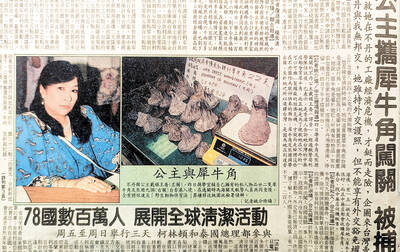Graffiti was once considered a sign of urban decay, the sort of thing that might keep tourists away from a neighborhood. Now, not only is it an accepted art form, but it’s also the subject of a new tour in one of Miami’s trendiest neighborhoods, Wynwood, where legal outdoor murals by graffiti artists cover the walls near art galleries and restaurants.
The two-hour tour — which takes place on Vespas — is offered by a company called Roam Rides. It starts with a 15-minute ride from Miami Beach over the Venetian Causeway to the Wynwood Arts District, considered the mecca of Miami’s emerging arts scene, and includes four or five stops to survey the area’s best graffiti. The tour ends with lunch at a happening Wynwood restaurant.
Once considered a rough neighborhood, Wynwood has become a destination for artists from all over the world. Art galleries abound and events are held here each December as part of the Art Basel Miami Beach art fair. Wynwood is also now home to one of the world’s largest installations of murals by multiple graffiti artists.
“It’s gotten to be so pervasive and it really brightens up the neighborhood,” Kit Sullivan of Roam Rides said.
“It’s so not what you would expect of Miami,” said Jesse Bull, an economics professor who took one of Roam Rides’ recent graffiti tours. “The graffiti has kind of added to that. It livens it up and makes it fresh and artsy and I think that’s a good thing.”
Guides point out work by different local artists — such as Typoe and “Tribe Called Phresh” aka TCP — while explaining the evolution of graffiti from the days when artists plastered their names on vacant buildings and train cars as a way to gain street cred.
These days, building owners give permission to artists to spray paint their designs, and these legal pieces share the walls of dozens of neighborhood art galleries and chic restaurants. They’re easy to distinguish from illegal graffiti, which is often done fast, in secret and at night, with a single or very few colors. The sanctioned murals, in contrast, allow artists to take their time, use multiple colors and work in-depth in large spaces with elaborate details.
“It’s definitely a changing art form,” Sullivan said. “It’s gotten to the point where a lot of these guys don’t even use their names at all. They just have a certain distinctive style. You can recognize it when you see it.” For example, artist Chor Boogie’s signature work includes geometric elements and half-hidden faces, as well as an eye.
Major paint companies are even helping graffiti artists make the transition to a legitimate art form by donating spray paint.
“Graffiti has been a bad word in America for a long time. We are trying to change that,” said Jayson Moreira, co-owner of Montana Colors North America, a spray paint company based in San Francisco, which donated 8,000 cans of spray paint used to create many of the murals in Miami during Art Basel. He even helped paint a mural of Japanese girls on the side of a two-story building that was once an RC Cola plant.
The world of graffiti has its own lingo. Artists “tag” their works with their names. A “throw up” is a quick piece. A “bomb” is usually illegal work that is “thrown up” fast, often at night, in a place that’s difficult to access. “Slashing” is when an artist disrespectfully “throws up” his names over a legal piece. A legally done mural or elaborate work that took days or weeks to complete is considered a “masterpiece.”
Artists looking for a space to paint legally here may seek help from Primary Flight, an organization that has brought hundreds of artists to the streets of Wynwood.
“A lot of people don’t go to museums or aren’t art collectors or art-educated,” Primary Flight founder Books Bischof said. “If you can take the same exact image from a street and put it in the museum, it doesn’t speak as loudly as it would if it were illegally on the street corner or in a gritty part of the neighborhood.”
Oscar Montes, 36, has been painting since he was a young teenager. Better known as Trek6, the artist wanted to pay tribute to his origins and the Puerto Rican community that once made up the Wynwood area, so he painted a legal mural that included a coqui, the island frog named for the ‘ko-kee’ sound it makes at night.
Montes said he spent around US$2,000 of his own money on paint — as well as hours of his time under Miami’s hot sun — creating the mural.
Graffiti is changing, he said. “A purist would tell you it’s gotten really soft,” he said. “When I started, everything was illegal. There was [a] serious graffiti task force. They’re less aggressive now because so much of it is legit.”
But while the artists are invited to do their work on buildings and sometimes get donated materials, for the most part they are not paid. Some predict that may change, and that the Miami graffiti community may eventually find fame and profit in their designs, the way artists like Keith Haring and Jean-Michel Basquiat did in New York several decades ago.
“That generation is going to bring it to another level where one day,” said Erni Vales, who runs a studio in the arts district, “it’s going to be like Pop Art.”

Next week, candidates will officially register to run for chair of the Chinese Nationalist Party (KMT). By the end of Friday, we will know who has registered for the Oct. 18 election. The number of declared candidates has been fluctuating daily. Some candidates registering may be disqualified, so the final list may be in flux for weeks. The list of likely candidates ranges from deep blue to deeper blue to deepest blue, bordering on red (pro-Chinese Communist Party, CCP). Unless current Chairman Eric Chu (朱立倫) can be convinced to run for re-election, the party looks likely to shift towards more hardline

Last week the story of the giant illegal crater dug in Kaohsiung’s Meinong District (美濃) emerged into the public consciousness. The site was used for sand and gravel extraction, and then filled with construction waste. Locals referred to it sardonically as the “Meinong Grand Canyon,” according to media reports, because it was 2 hectares in length and 10 meters deep. The land involved included both state-owned and local farm land. Local media said that the site had generated NT$300 million in profits, against fines of a few million and the loss of some excavators. OFFICIAL CORRUPTION? The site had been seized

Sept. 15 to Sept. 21 A Bhutanese princess caught at Taoyuan Airport with 22 rhino horns — worth about NT$31 million today — might have been just another curious front-page story. But the Sept. 17, 1993 incident came at a sensitive moment. Taiwan, dubbed “Die-wan” by the British conservationist group Environmental Investigation Agency (EIA), was under international fire for being a major hub for rhino horn. Just 10 days earlier, US secretary of the interior Bruce Babbitt had recommended sanctions against Taiwan for its “failure to end its participation in rhinoceros horn trade.” Even though Taiwan had restricted imports since 1985 and enacted

Enter the Dragon 13 will bring Taiwan’s first taste of Dirty Boxing Sunday at Taipei Gymnasium, one highlight of a mixed-rules card blending new formats with traditional MMA. The undercard starts at 10:30am, with the main card beginning at 4pm. Tickets are NT$1,200. Dirty Boxing is a US-born ruleset popularized by fighters Mike Perry and Jon Jones as an alternative to boxing. The format has gained traction overseas, with its inaugural championship streamed free to millions on YouTube, Facebook and Instagram. Taiwan’s version allows punches and elbows with clinch striking, but bans kicks, knees and takedowns. The rules are stricter than the